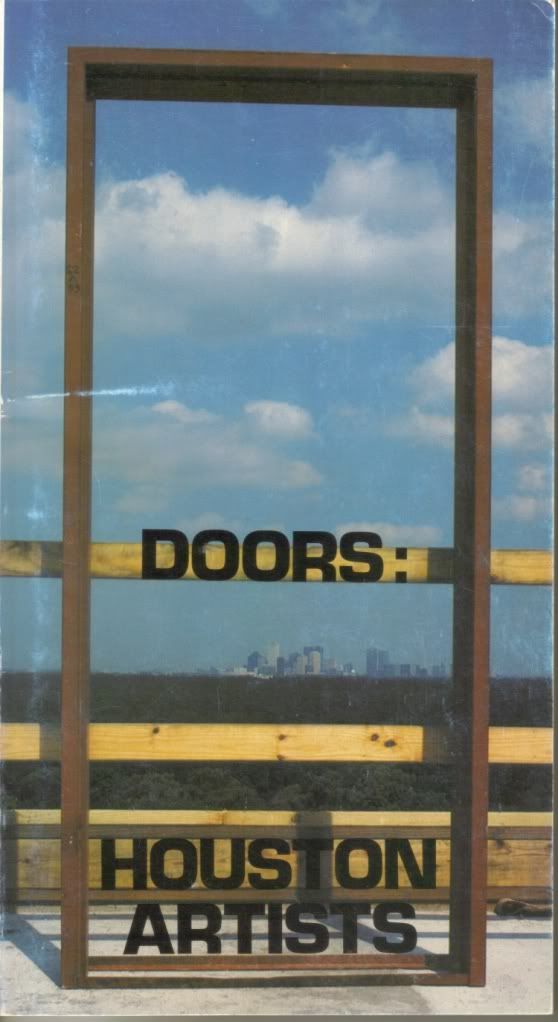Here's some of what I have read in the past few months (excluding graphic novels--I'll give them their own post). This is in reverse order--most recently read first.
 The $12 Million Dollar Stuffed Shark
The $12 Million Dollar Stuffed Shark by Don Thompson. I
reviewed this over on my other blog. Suffice it to say, if you are interested in economics and art, it's worth reading.
 The Gone-Away World
The Gone-Away World by Nick Harkaway. Highly entertaining with a rich, amusing prose style, this novel is a story of a world-wide apocalyptic disaster--how it came to happen and how folks coped with it subsequently. The event that pretty much destroys the world is the use of a weapon that separates matter and energy from the information that holds it together. But it is played primarily for laughs. In the end, this book is a comedy. But not a face--Harkaway creates characters he wants us to feel for, especially the nameless protagonist. His writing is sort of Thomas Pynchon-lite--rich and wonderful to read, digressive; occasionally a stunt sentence goes horribly wrong. But over-all, it was a pleasure to read this book.
 Doors: Houston Artists
Doors: Houston Artists by Trudy Sween. This was a show of Houston art that was put together in 1979. The theme of "doors" is rather contrived, but it does provide a snapshot of Houston art 30 years ago. Of the 54 artists, I recognized seven names--Mel Chin, Manual (Suzanne Bloom and Ed Hill), Gael Stack, Earl Staley, James Surls, and Salle Werner-Vaughn.
 Genesis
Genesis by Bernard Beckett. In the future, during a war between the U.S. and China, a germ weapon goes out of control and apparently kills everyone on Earth--except for the people of New Zealand, who adopt a merciless policy of destroying any airplane or boat that approaches its shores. The casual mention of the last radio broadcast from the outside world is a particularly chilling moment. After a generation of enforced isolation, combined with a totalitarian government (which resembles the one in
Brave New World, but without the Soma), someone rebels against the isolation and sneaks a refugee into the nation. This is, by itself, a really great set-up for a dystopian science fiction novel. But this short novel takes an abrupt turn at this point. The young rebel, Adam Forde, is imprisoned with a prototype A.I. The intention is for him to socialize the A.I. This is all being told from the vantage of the future. A young historian, Anaximander is being grilled for admission to The Academy.
I can't really say more without revealing too much. This novel will take most readers just an hour or two to read. Engaging and philosophical, I confess I would have still liked to have learned more about the war, the disease, the weird society created to save New Zealand, etc. But the novel ultimately zeros in on a particular theme never looks back.
 Flood
Flood by Stephen Baxter.
Flood starts as if Baxter is writing a typical Hollywood disaster movie. Indeed, I thought maybe he was trying to cash in by writing something he could sell to the movies. But Baxter is too honest not to carry his premise to a very un-Hollywood conclusion. So instead of an action-packed story of scientists battling to save the world, we have a multi-generational saga of the end of the world.
The world ends from flooding--specifically from the unexpected release of water from the Earth's mantle. The reason why it has happened is never discovered--the ability to do scientific research quickly ebbs as the coastlands, then the farmlands of the world are swallowed. The last remaining people with resources (including the remains of the United States government) start to build "arks". We follow the story of Ark 3, being build high in the Peruvian Andes. We know that the U.S. government is building Ark 1 in the Rockies. Where (or what) Ark 2 is is never disclosed (deliciously so, I thought). In the meantime, Tibet has become an organized cannibal state.
In science fiction, one is often presented with the hopefulness of science and technology. Or, one gets warnings of unintended consequences. But this book deals with a situation so overwhelming that there is no technological fix possible. It is a bleak and depressing book. Baxter is not the greatest creator of characters, and there is awkwardness here. But what is interesting here is that as the situation deteriorates, the main characters, who have an unbreakable closeness, start fraying. As humanity ends, even friendship stops having meaning.
 A Fan's Notes
A Fan's Notes by Frederick Exley. I loved the humor and feelings of failure, the way success for Exley is measured exclusively in terms of success for the New York Giants, and how aimless his life is without them--and most of all, the rich use of the English language. Not show-off-y--just right. I can hardly explain it. Like "I told him I wished that when I was his age I had sought out some dismal creature for advice. Having gone to fast-assed 'successful' souls (making the American mistake of equating success with wisdom), I was glibly assured that "you'll get over it," and when I did not, I despised myself for what I deemed a flimsiness of heart."
Or "Young advertising men and bond salesmen, they were in their twenties and thirties, some in their forties; they wore Paul Stuart or J. Press jackets and bow ties; they puffed suavely at cigars or pipes; they sipped their scotch with a kind of Old World sang-froid; they saw themselves as the kind of tweedy squires to whom the advertisements of
The New Yorker or
Esquire are directed--ironically, they saw themselves as having the kind of money Bumpy had, not realizing that that kind of money gave Bumpy immunity from having to dress like them."
Or "Awakening to my body for the first time, I heard the rhythmical, occasionally syncopated, and always audible contortions of my heart, now and then hearing from beneath the monstrously hot layers of flesh the plangent and ominous rumblings of unimaginable visceral parts."
Brilliant.
 Lonely Days and Wasted Nights
Lonely Days and Wasted Nights by Give Up. This is a self-published art book by the graffiti artist who goes by the
nom de mur "Give Up." There is almost no text--just page after page of black and white photographs of the posters and stencils that Give Up has put up, mostly in Houston but a few in other cities. Give Up's work shows a mordant sense of humor as well as a kind of windswept loneliness.
 Pollock: Veiling the Image
Pollock: Veiling the Image by Donald Wigal. Very beautifully produced, but a bit incoherent. There is no logical order for the reproductions. The text, which is extensive and runs throughout the book, is bizarre. The writer seems to have absorbed every bit of information about Pollack and then spits it out, willy nilly, into this essay. I mean, he talks
exhaustively about the Pollack bio-pic! I would have rather read less, or more about the pictures themselves--perhaps describing the time, place, and circumstances of the creation of each--especially if that would have given one a better concept of the arc of Pollack's career as a painter.
There are extensive reproductions of Pollack's early work, where you can see him working through the influences of Siqueros and Thomas Hart Benton and even Paul Klee. When he starts doing his Jungian surreal works, his genius really flowers--and this is well before "Mural" and before the drip paintings. Great artist, one of my favorites.
 Live at the Masque: Nightmare in Punk Alley
Live at the Masque: Nightmare in Punk Alley by Brendan Mullin and Roger Gastman. As far as I can tell, Brendan Mullin was at the center of one really interesting cultural happening in his life, and has spent the rest of his life writing about it. I am not judging him--one interesting cultural happening is one more than most people get to experience first hand. His club, the Masque, gave a lot of great bands a platform and helped incubate the L.A. punk scene. He compiled the excellent oral history,
We Got the Neutron Bomb, and wrote a biography of the Germs singer Darby Crash, and now this oversized coffee-table book of photos. It's a pretty good visual record of the scene, although the format is a bit overkill. It reflects that punks are now
old and
have jobs and
money to spend on nostalgic luxury items. Ironic, huh? We've come a long way form "We're Desperate."
 The Myth of the Rational Market
The Myth of the Rational Market by Justin Fox. I wrote about this book
here.Good book.
 Un Lun Dun
Un Lun Dun by China Mieville. Not likely to become a classic of children's literature, this is still quite an enjoyable read. Like all of Mieville's other books, the city is the star of this novel. The city in this case is unLondon, a city that is kind of an inverted, magical form of London. Mieville allows his imagination to run riot, filling his city with bizarre people and places, often with punning names. In this regard, it's like
The Phantom Tollbooth, but supersized
Harry Potter style. Mieville delights in taking common fantasy tropes, setting them up so that you think the story is going to follow a traditional path, then smashing them to bits. I won't say which fantasy cliches get this treatment--that would spoil the fun. But if you are familiar with the genre, you will recognize them (and laugh at their destruction by Mieville). Mieville also sneaks in his lefty, power-to-the-people, down-with-governments-and-the-rich themes. They aren't too overt--indeed you might only notice them if you were familiar with his some of his earlier books.
 Turn Out the Lights: Chronicles of Texas During the 80s and 90s
Turn Out the Lights: Chronicles of Texas During the 80s and 90s by Gary Cartwright. Gary Cartwright is one of the three great writers who came out of the Dallas-Fort Worth sportswriting scene in the early 60s (along with Bud Shrake and Dan Jenkins). While Shrake and Jenkins made their marks with novels and screenplays, Cartwright has remained true to his journalistic roots, doing the classic sort of long-form magazine journalism that one associates with Willie Morris's
Harpers or the early
New York Magazine. These pieces are mostly from
Texas Monthly, a magazine formed essentially as a Texas version of
New York, and certainly one of the few magazines that continues its tradition of first-person long-form magazine journalism to this day.
The pieces here are all very good and very readable. Cartwright dwells a bit much on his memories of the Kennedy assassination (he, by totally bizarre circumstance, happened to be rather close to the events and some of the personalities involved). Even though he is from Fort Worth and based in Dallas, these pieces come from all over the state (and beyond in a couple of places). Cartwright is great at creating a setting that feels real. The Houston he describes in his story about the Foreman-Holyfield fight is right on. Other outstanding stories are "The Innocent and the Damned," a chilling story of when "satanic ritual abuse" panic struck Auston, and "The Longest Ride of His Life" about the Randall Adams case (subject of the film T
hin Blue Line, and the first of many exonerations of falsely convicted men from the era of Henry Wade, a law-and-order DA in Dallas who we now know cut corners repeatedly to get convictions).
Kienholz Tableau Drawings. Sorry I don't have a cover image for this book. Too lazy to scan one in. This book was published in conjunction with a 2001 show of work by Ed and Nancy Kienholz. Ed Kienholz was one of the artist to emerge in L.A. in the 60s doing large scale assemblages, often with political and social satirical content. Kienholz's use of junk and salvage, the detritus of America, combined with his ability to create startling, surreal visual metaphors, made these tableaux some of the finest, most striking artworks of the past 40 years, in my opinion. As he was constructing a tableau, he would gather much more "junk" than he would eventually use. For example, he might need one clothing store dummy's hand, but have two available. So with the left-over junk, he would try to make smaller pieces that could be hung on a wall like a painting. They were still assemblages, but he called them "drawings."
This book collects all of them, and relates them to the larger tableaux that were created at the same time. They are just as moving, striking, grungy yet beautiful as the larger pieces.
In the early 70s, Kienholz began to collaborate with his wife on all his pieces. Until his death, all the pieces are by Ed and Nancy Kienholz. Some of the 70s pieces that Nancy worked on are kind of awkward like "The Bronze Pinball Machine With Woman Affixed Also" but most are just as good as his solo work from the 60s, particularly "Sollie 17" and "Pedicord Apts."
This book is beautifully produced. Nancy Reddin Kienholz was interviewed about the pieces, and snippets of the interview appear with photos of the pieces throughout the book. They are great--describing the circumstances of their making. One thing that is surprising is how many of them were inspired by a lucky "find" of just the right salvage. The "Pedicord Apts." were ispired when a friend of theirs in the demolition business (you'd expect that they'd have such friends!) told them he was tearing down a hotel in Spokane called "The Pedicord." Using materials from the hotel, they created this great tableau--and some drawings as well.
 The City & The City
The City & The City by China Mieville. While
Perdido Street Station and
The Scar featured cities where bizarre things and people were thrown at the reader continuously,
The City & The City features two cities that share one bizarre feature, the implications of which are thoroughly investigated. The old Eastern European city of Beszel exist in the same place as the somewhat Turkish city of Ul Qoma. When I say the same place, I don't mean that the cities are separated through some magical force--rather the residents of each city are trained from birth to not see the buildings and people of the other city. You may live next door to a house in the other city--but even though it is physically there, you can't see it. This separation is enforced by a mysterious group of enforcers called "Breach".
The story allows itself to be told through the investigation of a murder. Mieville, a lover of cities, must have realized that one of the best genres for telling a city's story is the crime novel. His is a police procedural that leads its detective to both cities. There are hint of a secret 3rd city that secretly rules, and the mystery of the Breach is always hovering above. The solution is small-scale, though. The conspiracy is petty and somewhat tawdry. This works better than having it turn into some grand magical conspiracy. Mieville suggests, I think, that cities have ther hidden sides--that are fascinating and even frightening, that we train ourselves not to see. And this quality of cities is not the result of a grand conspiracy of the powerful, but how cities evolve.
Labels: art, books, finance, music, Texas













